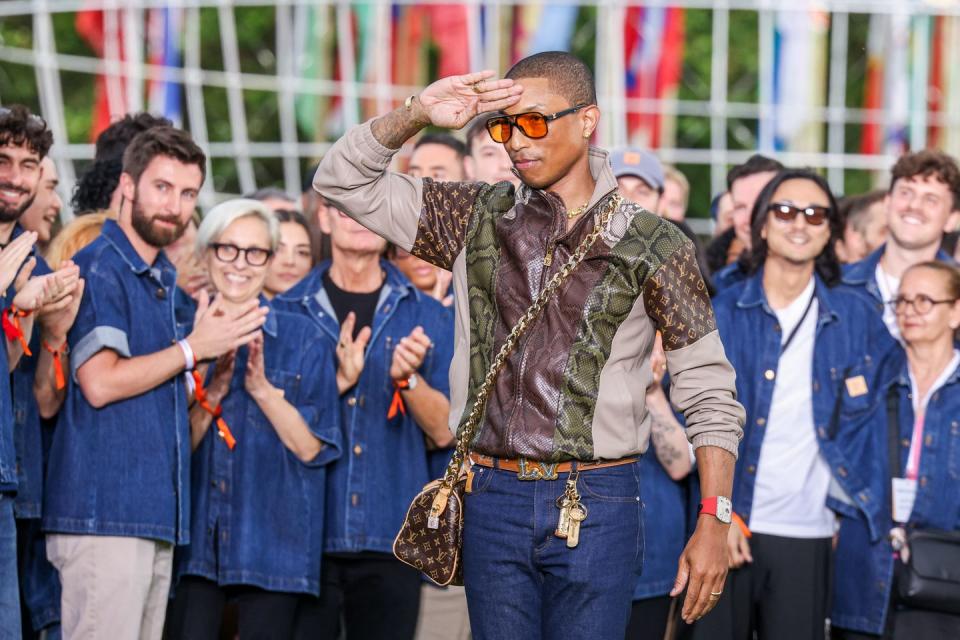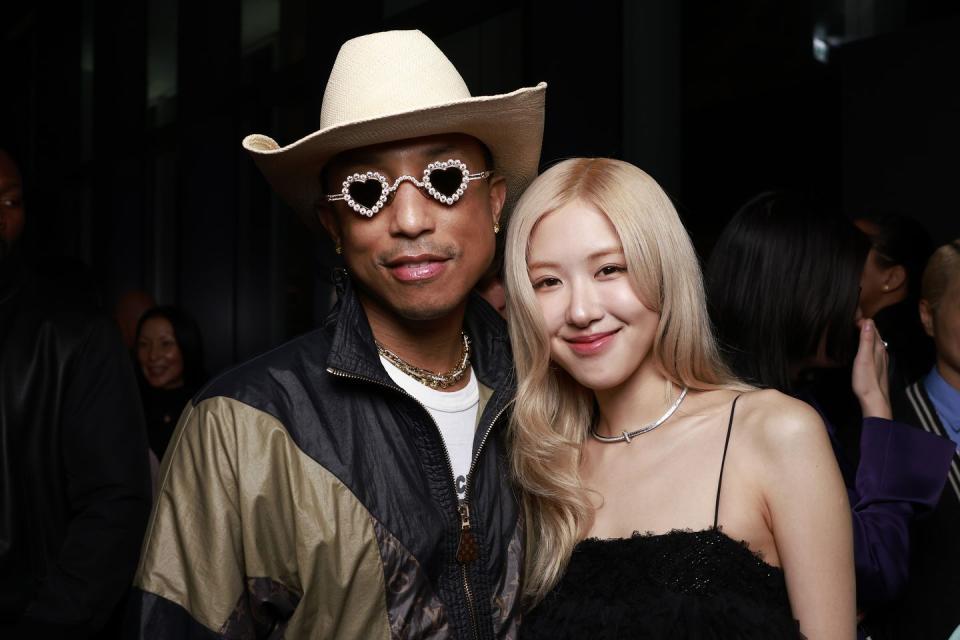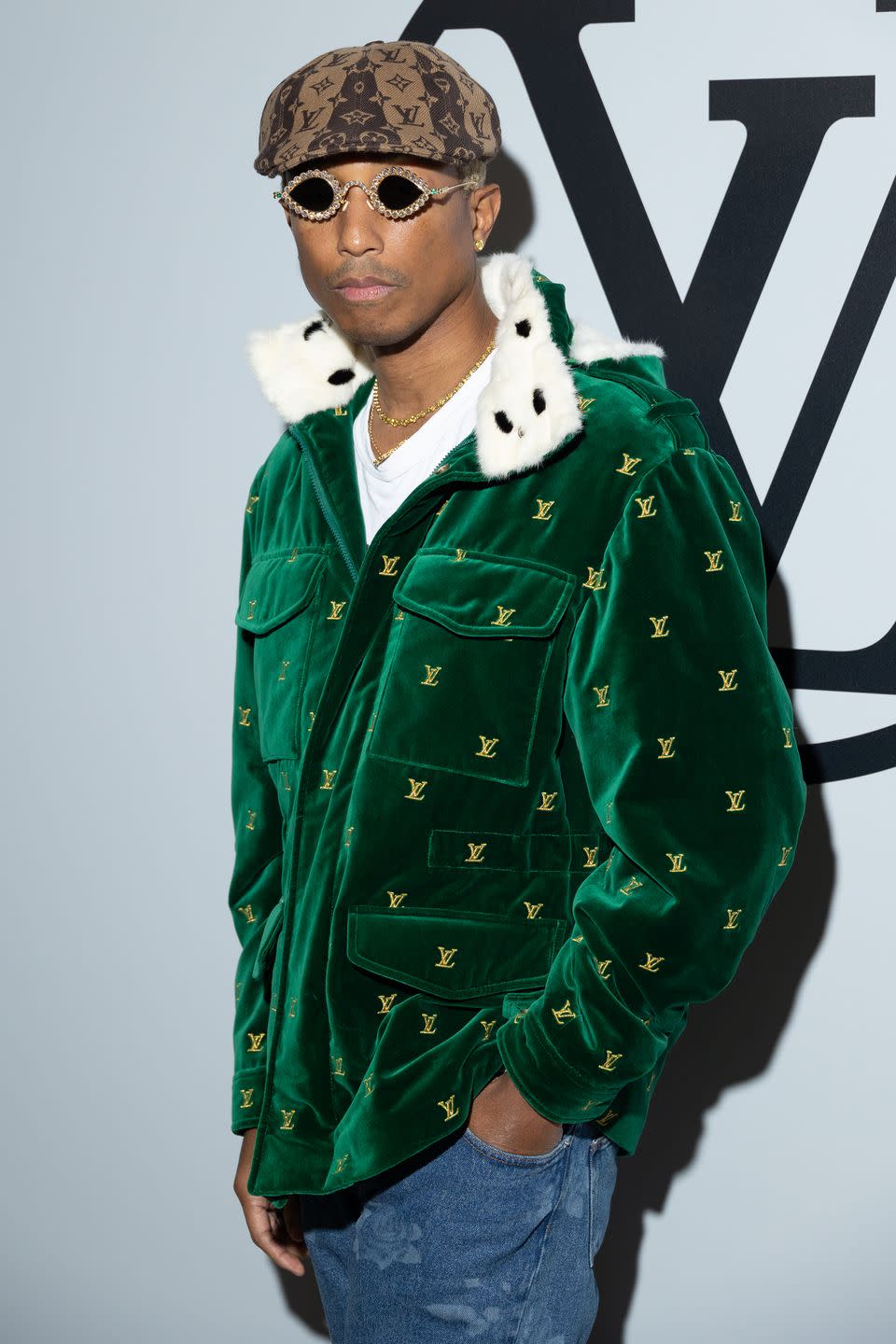From The Inside Out: How Pharrell Williams Took Over Fashion

From back-to-back hit singles to landing a creative director role at Louis Vuitton, Pharrell Williams’ proliferation in fashion has seen him become a powerful player in the industry. Just last week, his latest Ready to Wear SS25 fashion show at Men's Fashion Week in Paris was a buzzy affair. Celebrities, musicians, influencers, and fans of the brand gathered at the Unesco headquarters to watch the highly anticipated show. Last month, the American multi-disciplinary unveiled his debut collection for Tiffany & Co – adding yet another big-name luxury brand to his portfolio.
Music and fashion have long been bedfellows. For decades, both industries have benefited from this mutual partnership, key figureheads like Harlem couturier Dapper Dan, who transformed fashion’s relationship with music in the late 1980s and 1990s, have had a lasting impact on the industry today. But now, this convergence has reached new heights. Today, brands are calling on musicians for more than brand ambassador roles; they’re designing collections, appearing at fashion weeks and even, in Williams’s case, being named as creative directors.

It’s not just about creating a short-term buzz. Working with a musician like Williams allows brands to engage with two different industries simultaneously: loyal fans of the artist are likely to trust the brand and the products they’re putting out to the market; meanwhile, for brands, this approach can be a way to tap into a new community or culture without feeling gimmicky or performative.
FIND OUT MORE ON ELLE COLLECTIVE
Williams’ recent collection with Tiffany is a clear example of that. The inaugural collection, named Tiffany Titan by Pharrell Williams, was inspired by the mythological Poseidon’s trident. The pieces are bold and sport a new look for the luxury brand – with many necklaces, earrings, bracelets and rings featuring sharp, spear-like spikes. 'The detail in all of the jewellery pieces is very intentional, the use of black titanium… it’s a physical manifestation of beauty in Blackness,’ said Williams.
To his credit, Williams has a solid background in the fashion industry. He founded Billionaire Boys Club & Ice Cream (BBC Ice Cream) in 2003 alongside co-founder Nigo, founder of Japanese streetwear brand, A Bathing Ape. During his time at BBC Ice Cream, Williams showed the ability to bridge luxury and streetwear and simultaneously influence music, culture and the wider fashion industry. The music mogul also collaborated with Chanel back in 2019 to release an exclusive capsule collection and first collaborated with Moncler in 2009, and has continuously worked with the brand ever since.

‘Pharrell didn’t represent a singular craft or industry to begin with, he’s always moved around in different spaces,’ says Paul Simmons, strategy director and cultural insight consultant at MA World Group, an agency that works with luxury brands and musicians. ‘His approach to culture and creativity, and his willingness to experiment. Some brands make the mistake of looking at music as this 2D thing to leverage: if you’re a big name in music we’ll put you in this space and that will bring new audiences and sales.’
Williams’ undeniable rise within the fashion industry raises many questions about whether others in the music world could follow a similar path. While not impossible, but it's also not easy to replicate his level of success.
More and more musicians are attempting to carve out their own niche in the fashion industry. Look at Travis Scott and his series of sneaker drops with American sports giant Nike; or A$AP Rocky who was recently named creative director of Puma and Formula 1's partnership. Tyler, the Creator, recently collaborated with Williams.
Another example is Rihanna, who tried her hand at being a creative director with her now-closed ready-to-wear label Fenty, backed by Louis Vuitton owner LVMH. She's recently returned to the fashion space with another Fenty x Puma sneaker tie-up.

Of course, not every music-fashion venture will be a hit. Brands often see these partnership as a quick and easy shortcut to generate sales, says Simmons. ‘Instead, brands need think about whether the musician’s audience is able to afford their products.’ Shoppers are smart, he says, and having a big audience doesn’t equal sold out collections. If the collaboration doesn’t align with them, it’s also likely to have a negative impact on their opinion of the brand.
At a time when we're inundated with brand ambassadors and surface level collaborations, Williams signals a shift by seamlessly bridging two industries together. He’s not trying to replicate his predecessor Virgil Abloh, instead he’s carving out his own path.
‘It feels like [Louis Vuitton Men’s] has moved on Virgil, we’ve progressed in a positive way, and it helps that Pharrell is a loved artist,' says Simmons. 'He’s loved by a very diverse group of audiences because of his positivity, his desire to experiment and explore his curiosity. And he also still looks about 30 years old. There’s a lot to like about him.'
ELLE Collective is a new community of fashion, beauty and culture lovers. For access to exclusive content, events, inspiring advice from our Editors and industry experts, as well the opportunity to meet designers, thought-leaders and stylists, become a member todayHERE.
You Might Also Like


